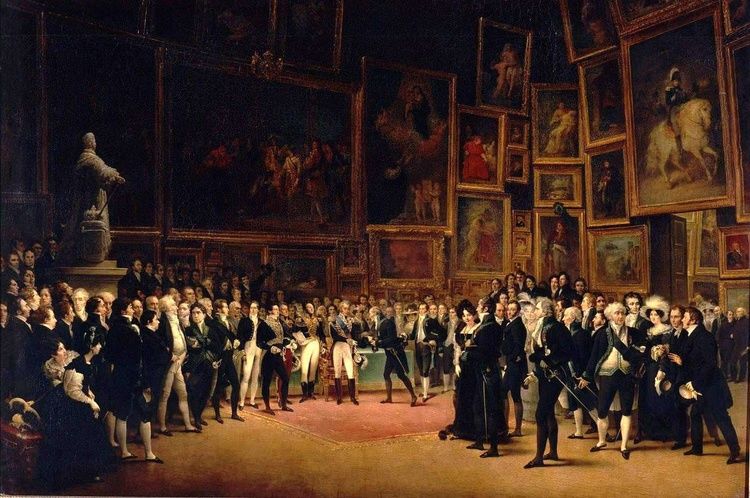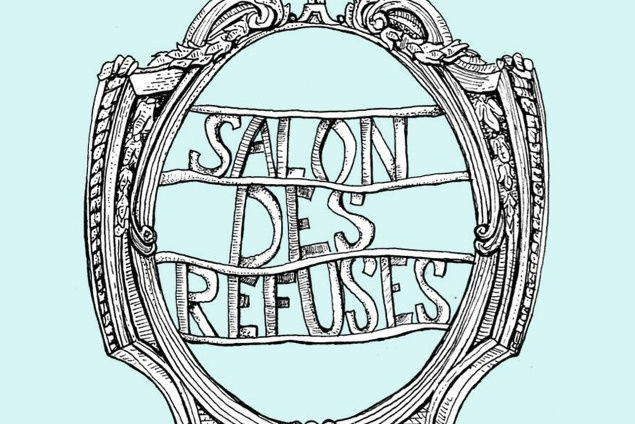Elodie.M Richard
''Le Salon des refuses''
The Salon des Refusés, 1863
Of the works that were accepted to the 1863 Salon, in France, Alexandre Cabanel's Birth of Venus was the recipient of much acclaim and was even purchased by Napolean III. Cabanel made several copies of this painting which was influenced both by ancient art and the Renaissance.
In fact, more than half of the works of art, over 2,000, that were submitted by artists were refused. Which is why in that same year the first "Salon des Refusés" was held, giving those artists another chance to exhibit their work. The idea for this alternative Salon was that of Napolean III who felt that the jury was much too strict and that the public should have a chance to decide for themselves.
As Robert Rosenblum writes in the book 19th-Century Art:
"Napoleon III himself, having seen samples of the rejects, could find little difference between them and those selected for the official Salon, and the temporary exhibition space seemed a happy compromise. This so-called Salon des Refusés, however, immediately took on the stature of a counterestablishment manifestation, where artists at war with authority could be seen and where the public could go either to jeer or to enlarge their ideas of what a work of art could be. The counter-Salon opened two weeks after the official one, on May 15, and immediately attracted hordes of Parisians, who numbered as many as four thousand on a Sunday, when admission was free."*
Not every artist wanted to be part of a "reject's gallery of art", but Édouard Manet submitted three paintings which he displayed as a triptych. The centerpiece of this, and perhaps one of the most well known works of the 19th century is his Luncheon on the Grass, a work that also reflected Italian Renaissance ideas but with subjects shown in a modern setting.
While it was ridiculed by some critics at the time, it was also praised by writers such as Emile Zola. The Luncheon on the Grass was instantly an influential painting and many artists were to be influenced by Manet's contemporary style, broad brushstrokes, modern figures and flattened areas of color. It appeared to many to be a painted sketch that would have later been turned into a finished painting. Manet was influenced quite a bit by the Old Masters in much of his work, in particular this work shows influenced by Titian and Raphael.
Manet was not alone in presenting unknown subjects using loose brushstrokes. James Abbott McNeil Whistler's painting known as The White Girl, was more focused on all the different colors that white can appear in a work than on its subject, who was his mistress. In this painting we see a work with no story or historical reference, in this sense neither Manet's nor Whistler's paintings would have been considered hierarchically important enough to have been chosen for the Salon. Whistler was more concerned with light and shadow and the composition of the subject. In fact it was Whistler who coined the phrase "art for art's sake" which was not a common concept in the mid-19th century.
Art was created for many reasons through the centuries: to memorialize an event, to teach, as political propaganda, for prayer and devotion, to pay honor to someone, but the idea of creating art for art's sake was relatively new.
Nowadays, the ''refused ones'' are still out there, more than ever. Refused because the style is an ''has been'', because it is figurative and has a meaning, or on the contrary, because it as no meaning,...among other multiple reasons to be a ''refused one''. Searching for the 5th legged sheep, it seems to me that galeries accept the everything in the nothing, or...the nothing which is being given the power of the money. The 5th legged sheep... Creating art for art's sake became a motto on which many artists evolve like on a sharp razor. What about the artist's sake? No the same thing eh?



